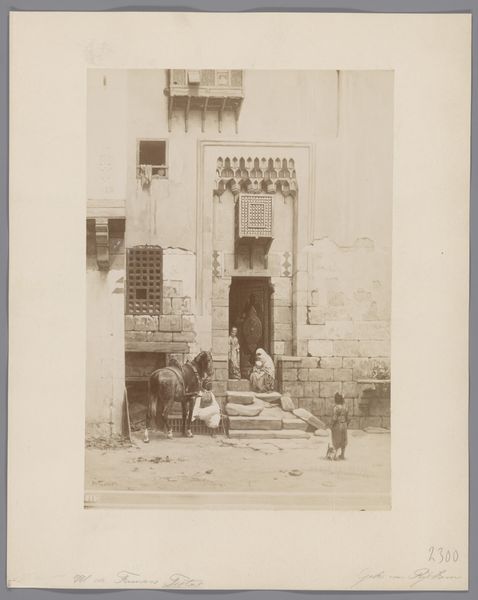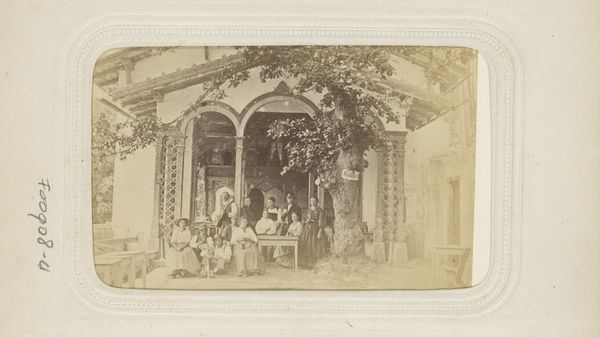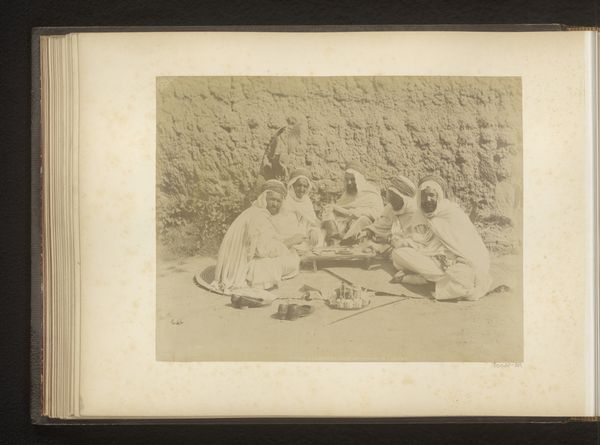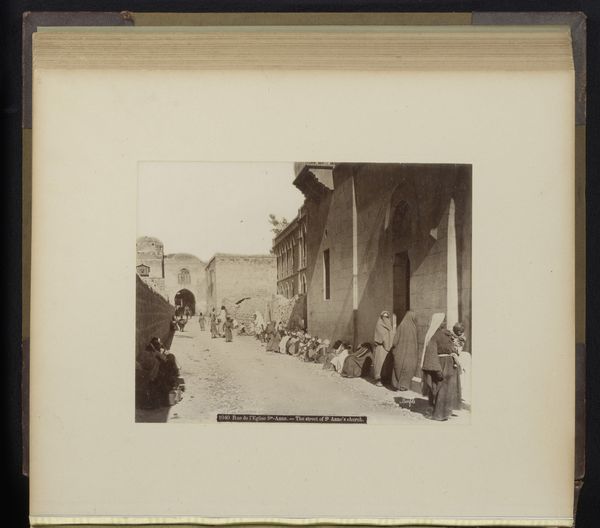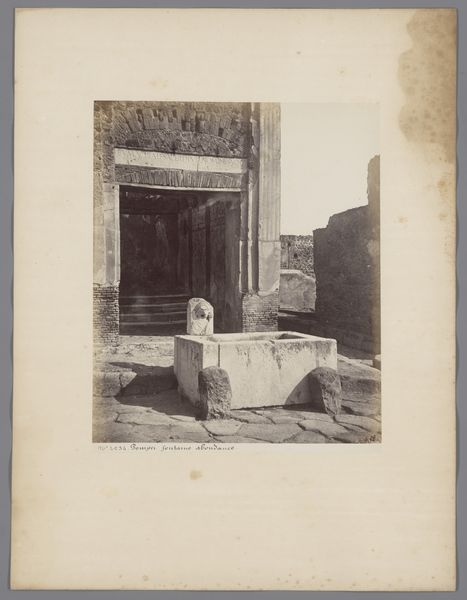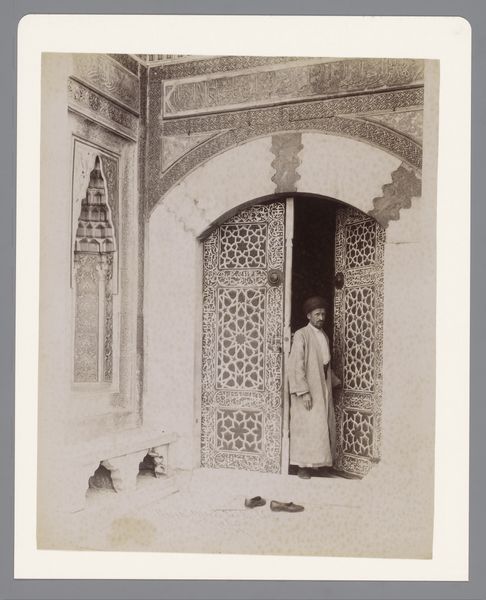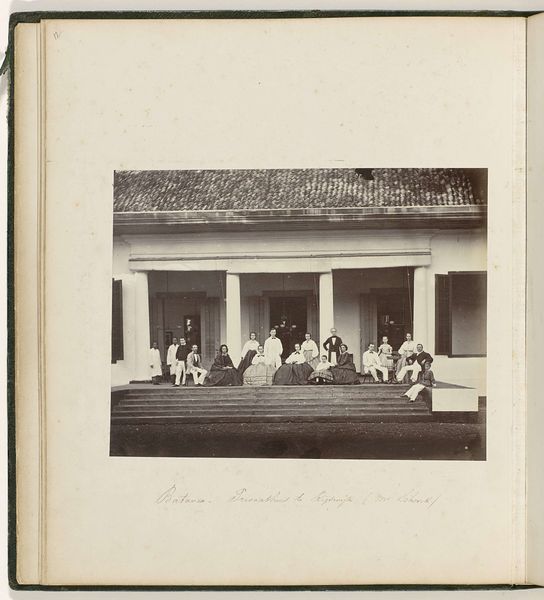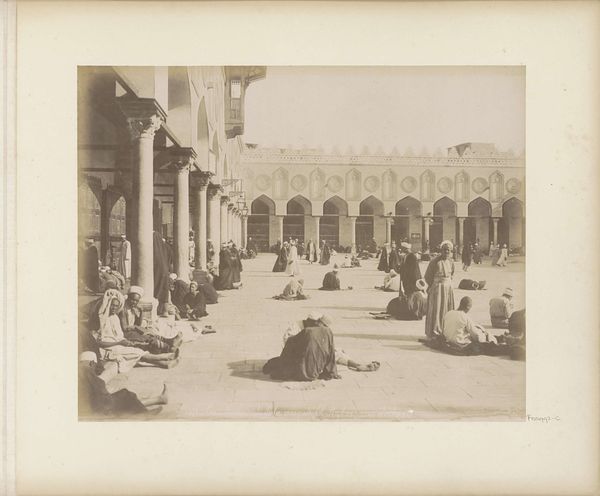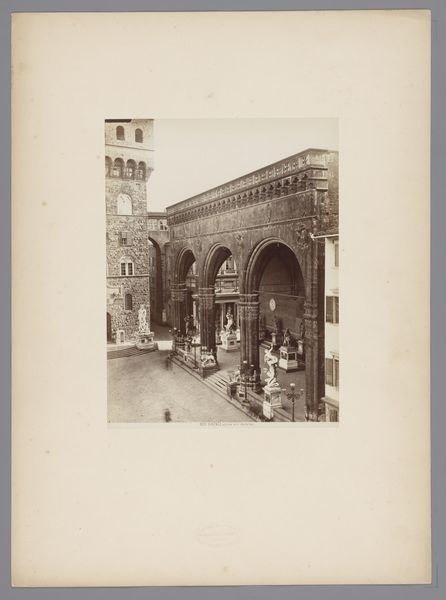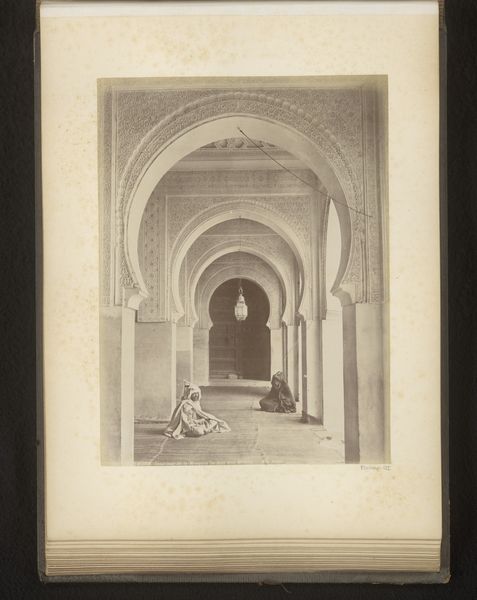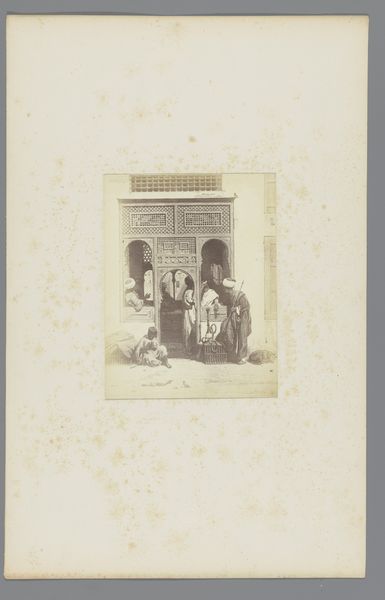
photography, gelatin-silver-print
#
landscape
#
photography
#
gelatin-silver-print
#
islamic-art
#
genre-painting
Dimensions: height 271 mm, width 208 mm
Copyright: Rijks Museum: Open Domain
Curator: The piece before us is an intriguing gelatin-silver print from circa 1880 to 1900 by Étienne Neurdein, titled "Mannen wassen het gezicht of drinken op een binnenplaats"—loosely translated as "Men Washing Their Faces or Drinking in a Courtyard." It seems rather casual for a photograph, almost snapshot-like, doesn’t it? Editor: Snapshot-like, yes, but also imbued with a deep stillness. The monochromatic palette casts the scene in a kind of eternal present. The composition is striking – the geometric forms of the architecture versus the fluid postures of the figures. There's a palpable tension between structure and organic movement. Curator: Precisely! The photograph acts as a crucial artifact from the period. Neurdein was a prominent photographer who documented life in North Africa. Works like these were integral to shaping European perceptions of Islamic culture during a time of burgeoning colonialism. Editor: Absolutely, we see the ways in which photography played a vital role in the construction of Orientalist narratives. Consider the gaze implied by the framing— the presumed viewer as an outsider observing this quotidian scene. Are we invited in, or are we simply looking on? Curator: One might ponder Neurdein’s compositional choices as inherently loaded. For example, he employs repetition and depth through the arches, but the men’s activities in the foreground act almost as an ethnographic study. Editor: A formal device, undoubtedly! Note the careful arrangement of figures and objects; for example, the placement of footwear. Through an almost anthropological lens, one can appreciate these details as signifying particular rituals and modes of life, even while aware of the pitfalls of that analytical perspective. Curator: And indeed, despite the colonial implications, it is also undeniably an aesthetic object with beautiful tones. The details of light falling through the arches are really marvelous and almost meditative. It captures a fleeting moment in time, almost poetic in a sense. Editor: An astute summary. It's impossible to disregard the context while simultaneously appreciating its pure visuality. The dialectic that continues in my head highlights the very essence of analyzing historical pieces of art.
Comments
No comments
Be the first to comment and join the conversation on the ultimate creative platform.
